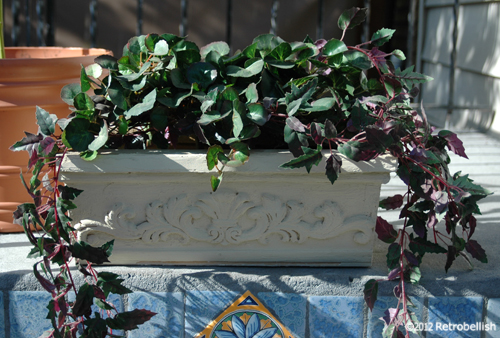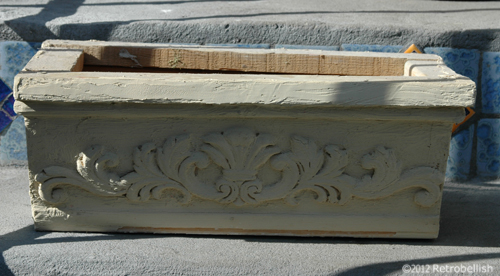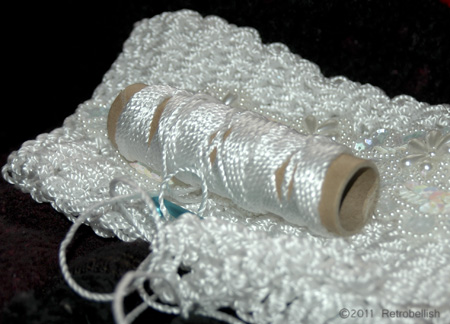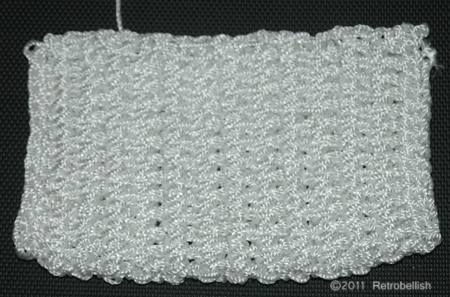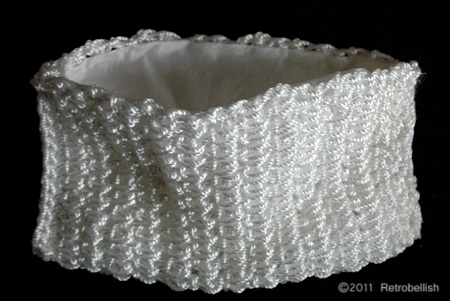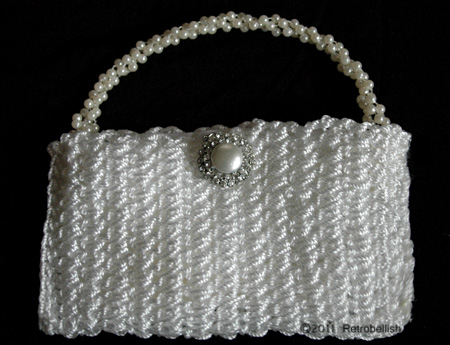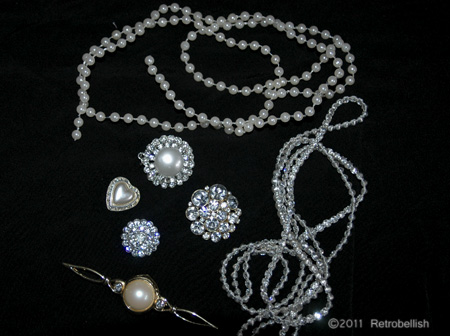Scrap Wood Flower Box
This wood flower box started out as pieces of scrap wood that we had left over after one of our rehab projects. I originally wanted save the scrap wood pieces to paint folk art farm scenes. I painted on the smaller scrap wood pieces, which at the time I was selling at our local craft shows. My husband reused some of the drywall screws that were left over to put the box together. He also used some pieces of scrap moldings and an old wood applique we had reclaimed. We then spread drywall compound on the outside of the box with an old dried out paint brush to give it a rustic look we were looking for and once the drywall compound thoroughly dried, we painted the box with a cream colored latex paint. I added some silk vines I had lying around in my basement, and the final project turned out exceptionally well. Although I decided to use silk vines in mine, if one wanted to use a real plant, you could use any plastic bag or liner in the box and drill two holes at the bottom for drainage. So don’t hesitate to play around with scrap wood pieces. See what you can create and just have fun.
White Crocheted Pearl Purse
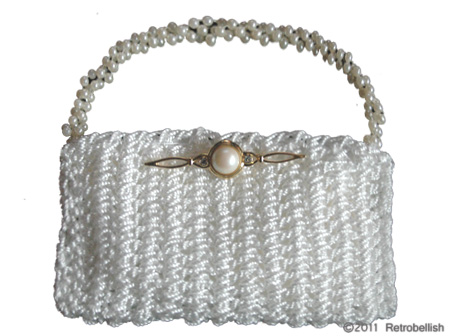
Just when I thought I couldn’t find any other type of fiber thread to crochet with, I found this Twisted Mason’s String Line in many colors at our local home improvement store. One of the pros I liked about this nylon string is that it’s very strong and lends itself to making very strong crochet pieces such as purses and straps. Other great qualities about this string is that it’s so soft to the touch and crocheting with it creates a great thick texture and an incredible satin sheen. It’s also waterproof.
Although the string is very thick and beautiful, it does have one drawback, the cut end of the string easily unravels. Before starting this project, I used my hot glue gun to dab a very small dot of hot glue onto the loose ends, and used a toothpick to push the loose ends together. Once the glued tip is dry, you can begin to crochet.
Because the string is so thick, I used a size N crochet needle. I crocheted 28 single chains, single crocheted the next row, and double crocheted the next ten rows. At this point I experimented by folding the purse in half vertically (against the direction of the crocheted rows). I loved the way the weave looked vertically when I held it in my hand like a clutch purse. This part is great, because at an early point you can decide how big you want your purse. I decided at this point that I wanted my purse a little bigger, so I crocheted several more rows and stopped at 14 (double crocheted) rows. I then single crocheted one more row before finishing. I knotted and hot glued the cut end (and after it dried) tucked the end within the stitches.
Next I wanted to line the inside of the purse, so I measured the purse. When folded, the purse measures five inches long and eight inches wide. I had a pretty white (polyester blend) fabric left over from another project which I used to line the purse. I hand sewed the fabric to the inside of the purse (making sure to stop within 1/4 inch from the edges). I folded the purse in half and using a smaller crochet needle weaved a ten inch long (same) string through the purse edge stitches to seal each side of the purse (making sure to hot glue the cut ends). For the purse closure on the inside top center, I decided to cut and sew on two small white Velcro pieces.
Some of the embellishments used in this project are from leftover miscellaneous broken pieces and even thrift store finds that I keep in a box for projects such as this one. I thought some of these pieces might look pretty on the purse. In a few of the featured pictures you can see where I’ve tried comparing different pieces to embellish the purse. I also had a long strand of wired pearls that I thought would make a great purse handle. I tripled and twisted the wired pearl strand into a handle shape that gave me that unique look for the purse and actually complimented the beautiful thick weave of the purse.
I enjoyed making this purse very much, and had even more fun embellishing it. The sky is the limit for creating and embellishing a small purse. The white string I used for this purse was beautiful, but the string also comes in different colors so I can’t wait to try my next purse in a beautiful bright color, which I will definitely post here. I also imagine using a bright print fabric to line the inside of my next purse along with some beautiful colorful beads for the handle and outside embellishments.
Recycled Fleece Leopard Gloves
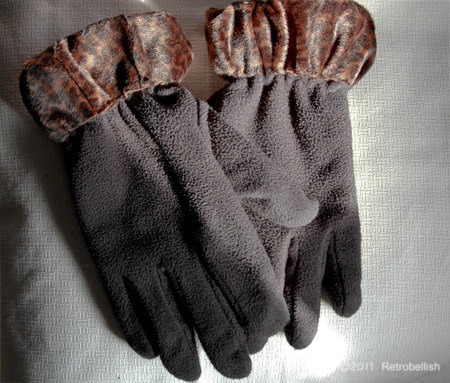
Another way to give an old pair of gloves a fresh new look is by adding some type of embellishment, especially when the gloves have a two inch extended cuff. I thought the gloves would look very nice embellished with some beautiful fabric. I looked through my fabric remnants and found an old leopard print that I thought would look very nice sewn onto the cuffs of my gloves. I measured the cuffs, the fabric, and then cut enough fabric for both cuffs.
I sewed the fabric onto each cuff and started by placing the fabric edge near the elastic edge part of the cuff. I then made sure to slightly gather the fabric every inch or so and sewed that gathered fabric firmly to the glove. This would ensure that the fabric would have enough elasticity to stretch with the glove’s elastic edge.
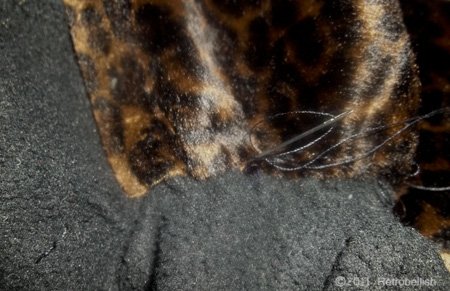
Next I folded the rest of the fabric over the cuff edge and sewed the other end to the inside part of the glove. I really loved the way the newly embellished gloves turned out. They have a totally different look and with only a little less than a quarter yard of fabric. You don’t have to embellish a cuff with fabric, you can easily change the look of gloves with simple and colorful buttons, bows, or other embellishments. There are so many wonderful and fun fabrics for children and many that can be found on sale in the remnants section of a fabric store.
Reclaimed Towel Dog Toy
The idea for this reclaimed towel dog toy all started with our puppy boy Maxx who always loved to play tug with his towels as soon as we dried him off after a bath or after playing in the snow. We wanted to recycle some old terry cloth towels that Maxx had ripped up. These towels were still solid enough to make some kind of simple tug toy for Maxx to play with.
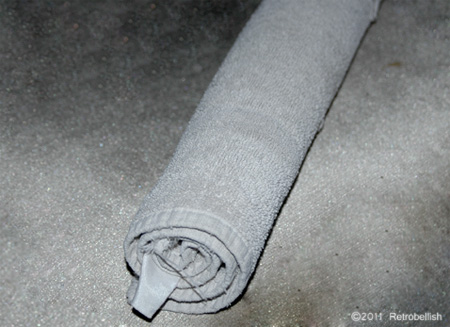
We snugly rolled up the towel length-wise (so that a small ripped part in the middle was hidden) and then carefully tied one end of the rolled up towel into a big knot (making sure to tuck the towel end tip inside the loop of the knot). The tug toy is very sturdy, yet soft enough that it won’t hurt a dog’s mouth when he pulls and bites it. It’s also easy to keep clean because the tug toy can always be untied and thrown in the washer. Once the tug toy gets worn out, one can easily make another one from old towels. The towels could also be cut up into smaller strips for smaller pets.
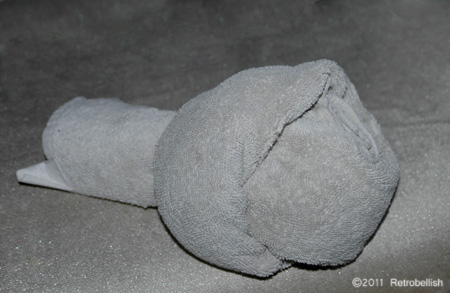
Collage On Lampshade
A great way to give old worn out or damaged lamp shades a different look and feel is to cover them with anything from leftover fabrics to holiday wrapping paper. In the case of the lampshade featured here, I decided to cover it with some type of fabric or paper when I found it had gotten stained after many years in our garage. I was lucky to find a beautiful Victorian print wrapping paper that had the colors and feel of the look I was trying to capture. To get started, I first removed the outer cloth-like fabric from the lampshade, which revealed a white plastic lampshade base. To give this white plastic base a more antique look, I painted the inside of the lampshade with a brown acrylic craft paint. The lampshade also had a narrow white cloth strip at the top and bottom rims, so I used a strong cup of coffee and paintbrush to tint both of the white cloth strips.
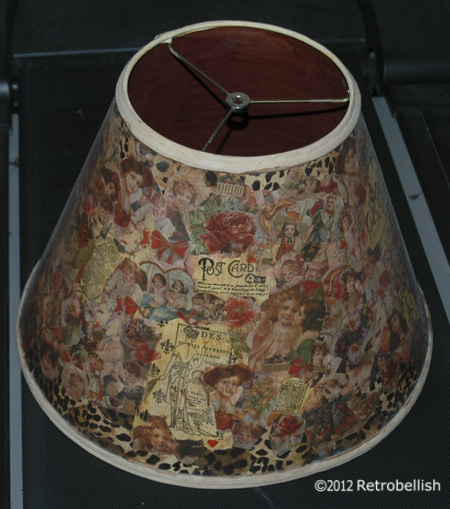
I then cut out all of my favorite pictures from the Victorian wrapping paper, and pieces from some leopard print wrapping paper too. I also have some rubber stamps of different old world pictures (like the London Tower, the Paris Eiffel Tower, and other various Victorian images) which I stamped onto parchment paper and cut out as well. Next, I laid out all of the pictures on a table so that I could see their placement before gluing them onto the lampshade. Once I finished positioning the pictures in an order I found very pleasing, I used a sponge brush and Mod Podge to apply the pictures onto the old lampshade. After the lampshade thoroughly dried, I applied another coat of Mod Podge on the entire shade to seal it. I let that coat dry for a couple hours, and then applied one more coat, which gave the pieces a blended look.
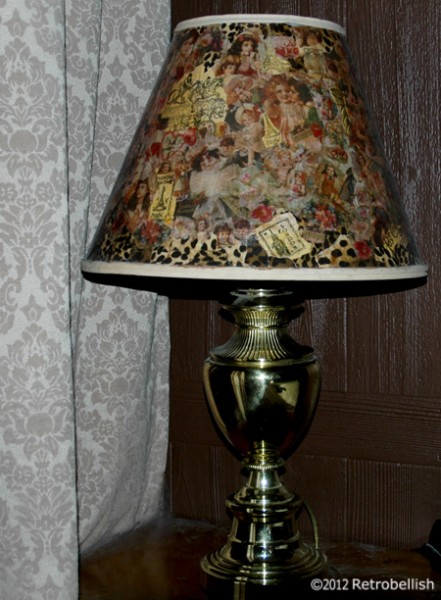
I was very happy with the results and although I didn’t use any decorative embellishments on the top and bottom edges of my lampshade, you can always use beautiful fringe, jewels or textured trim to decorate your lampshade. After a party or any holiday, if I come across a beautiful piece of wrapping paper, I try to recycle as much of it as I can for future craft projects.
